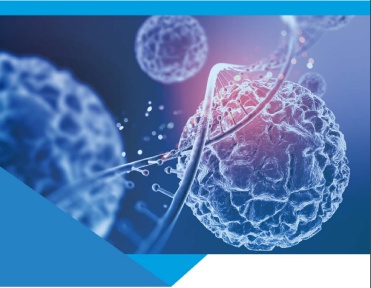Beam Therapeutics is laying off 100 employees and rejigging its pipeline priorities to save cash, citing a “challenging market environment.”
The new project hierarchy, disclosed Thursday, will focus on the two lead programs, BEAM-101 and ESCAPE, both aimed at treating patients with sickle cell disease, with the latter also being developed to treat beta thalassemia. Alongside these, Beam will prioritize BEAM-302, which is currently in IND-enabling studies for the treatment of alpha-1 antitrypsin deficiency.
The biotech’s cost savings are coming primarily from layoffs and sunsetting work on its base-edited CAR-Ts. The company said it will look to accrue a “focused clinical dataset” on phase 1-stage BEAM-201 and seek partnerships for that asset and other ex vivo CAR-T programs. An update to the clinical trial record last month included two additional trial sites, in California and Colorado, respectively. An AAV program for Stargardt disease has also been removed from Beam’s public pipeline.
Roughly 100 employees are being laid off, the company said, equating to 20% of the entire workforce. The exits are expected to be completed before the end of the year and will cost the company about $6.6 million in severance-related charges.
All told, the moves extend the company’s cash runway into 2026. Beam had about $1.1 billion in cash and investment securities as of June 30, with a third-quarter earnings date yet to be announced. Such is life in biotech these days, where having more than $1 billion at your disposal still doesn’t insulate you from the perils of a frigid market.
Stymying Beam’s momentum has been BEAM-101’s phase 1/2 trial, which has yet to dose a single patient. CEO John Evans told Fierce Biotech in August that it was still “plausible” that the company would see the first dose administered before the end of the year. A previously enrolled patient dropped out earlier this year for personal reasons, which Evans said knocked the company back.
It takes about six months for Beam to prepare a patient for dosing, and there’s a 40-day buffer period between dosing subsequent patients to make sure engraftment occurs. Evans affirmed in August that the biotech expects data on multiple patients next year. The first patient has now been dosed in a phase 1/2 trial for BEAM-201, a study that began almost a year after the BEAM-101 trial launched, according to an announcement last month.

Check out our AAV CDMO service to expedite your gene therapy research
PackGene Biotech is a world-leading CRO and CDMO, excelling in AAV vectors, mRNA, plasmid DNA, and lentiviral vector solutions. Our comprehensive offerings span from vector design and construction to AAV, lentivirus, and mRNA services. With a sharp focus on early-stage drug discovery, preclinical development, and cell and gene therapy trials, we deliver cost-effective, dependable, and scalable production solutions. Leveraging our groundbreaking π-alpha 293 AAV high-yield platform, we amplify AAV production by up to 10-fold, yielding up to 1e+17vg per batch to meet diverse commercial and clinical project needs. Moreover, our tailored mRNA and LNP products and services cater to every stage of drug and vaccine development, from research to GMP production, providing a seamless, end-to-end solution.
Related News
Exploring Tau Protein’s Role in Glaucoma: New Insights and Therapeutic Potential
Glaucoma, a chronic neurodegenerative disorder, leads to irreversible vision loss by damaging retinal ganglion cells (RGCs) and the optic nerve, often associated with increased intraocular pressure (IOP). Despite the benefits of IOP-lowering treatments, the underlying...
FDA-mandated CAR-T monitoring period could be halved, say researchers
In patients with diffuse large B-cell non-Hodgkin lymphoma (DLBCL), the two hallmark post-chimeric antigen receptor (CAR)-T therapy toxicities are extremely rare after two weeks, supporting a shorter, more flexible toxicity monitoring period, according to a study...
Ancestral CRISPR-Cas13 Ribonucleases Discovered: Implications for Genome Editing
In a pioneering study published in *Science*, a team of researchers led by Peter H. Yoon and Jennifer A. Doudna from the University of California, Berkeley, has made a remarkable discovery in the realm of CRISPR technology. The team has identified an ancestral clade...
KBI Biopharma Expands Manufacturing Contract with Global Pharmaceutical Company
KBI Biopharma Inc., a JSR Life Sciences company and global cGMP contract development and manufacturing organization (CDMO), has extended and expanded its manufacturing contract with a leading global pharmaceutical company. Originally initiated in 2020, the renewed...
Related Services

Plasmids GMP Services

AAV GMP Services


